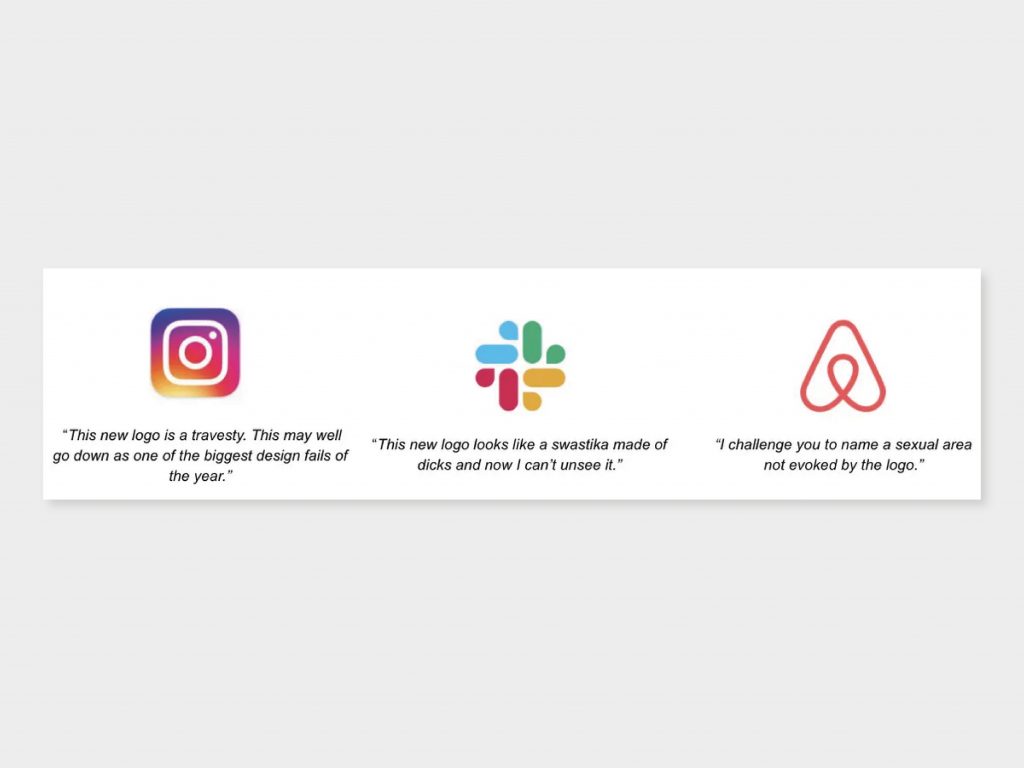Rebranding 101 – A Guide for Decision-Makers
6th Apr 2023

In today’s competitive business environment, a strong brand identity is critical for sticking out and leaving a lasting effect on your target audience. And rebranding is just one of the approaches to keep your brand fresh and relevant.
We’ve prepared this article for businesses that are at a stage of considering rebranding but are unfamiliar with the processes. So, we’ll take an in-depth look at rebranding, address frequently asked issues, and give professional recommendations based on our industry experience.
When to Consider Rebranding?
Outdated brand image
If your brand’s image is no longer resonating with your target audience or is beginning to appear irrelevant in comparison to your competitors – it’s likely time to rebrand. Since it can assist you in modernising the design and tone of voice of your brand. Essentially, making your brand more desirable to your customers.
For example, feel free to take a look at our case study – where we updated the brand & developed a new website to meet the business goals of Eclipse Automotive Technology.
Mergers and acquisitions
Rebranding is typically required when two companies merge or one acquires another in order to create a unified brand. This can help the newly formed organisation in effectively communicating its value proposition to customers and creating a consistent brand experience.
Change in business strategy or target audience
If your company’s business strategy or target audience has changed significantly – your brand identity should reflect them. Rebranding can help you explain your new vision more effectively and connect with your redefined audience.
Reputation management
To deal with a damaged brand image, a PR crisis, and/or an unfavourable press outlook on your company – rebranding is one of the solutions. It can help you re-establish trust & confidence with your audience. As well as setting your brand for future success that not only tackles past mistakes but also shows your commitment to doing better.
Common Misconceptions About Rebranding
Rebranding is just a logo change
Many individuals wrongly believe that rebranding consists merely of creating a new logo. However, rebranding involves SO much more. Including brand messaging, visual identity, tone of voice, and overall brand strategy. A successful rebrand demands a holistic approach in order to ensure a consistent and coherent end product.
Rebranding is too costly
While rebranding might be expensive, it is critical to understand the potential long-term benefits. After all, you wouldn’t be complaining about spending a lot of money on paid advertising if it delivers profit.
A successful rebrand can lead to increased customer loyalty, improved brand recognition, and, eventually, more money. So, before making a decision – businesses should carefully consider the costs of rebranding in relation to the potential return on investment (ROI).
Although, keep in mind that results from a rebrand aren’t as easily trackable. Benefits to your business can come from areas like brand loyalty and trust, which are harder to define in precise numbers.
Rebranding should happen frequently
Rebranding should NOT be done on the spur of the moment or too frequently. It’s essential to have a compelling reason to go through the process. Considering that repeated changes can cause confusion among your customers and erode your credibility.
Instead, concentrate on keeping a consistent brand identity and only go through rebranding when it is STRATEGICLY advantageous.
Steps to a Successful Rebrand
Assess the need for rebranding
Before starting a rebranding project, you should assess your current brand identity and establish whether it’s genuinely necessary. To make an informed decision, consider industry changes, client feedback, and business growth.
No situation is exactly the same, but talking with branding experts can bring you clarity on this part of the decision-making process.
Set clear objectives and goals
Set objectives and goals to ensure that your rebranding is aligned with your overall business plan. In other words, don’t go in blind and expect the rebrand to deliver. These goals could include increasing brand recognition, reaching a new audience, or expressing a shift in your company’s direction.
Conduct research and analysis
Consume as much relevant information as you can. Focus on your target audience, competition, and the overall market. And, more importantly, use that to form actionable insights – after all, data without storytelling doesn’t say much.
The research itself can help you discover opportunities for standing out, inform rebranding decisions, and ensure that your new brand identity agrees with your target audience.
Develop the new brand identity
To establish a consistent brand experience, update your logo, colour palette, typography, and messaging. Ideally, you’ll either be working with an agency or have built an in-house branding team. Although be careful to choose whom you’re working with – it’s important that your vision is understood and delivered upon.
Plan the rebrand launch strategy
Have a detailed plan for your new brand launch. Usually, the project is revealed to customers, employees, and stakeholders at different stages.
This approach should include updating all brand touchpoints, including your website, social media, and other marketing materials. A smartly timed digital PR campaign can achieve wonders in raising awareness & generating online buzz about your new brand.
Measure success and make adjustments
Once the rebrand is live, you need to monitor the KPIs set beforehand, such as brand awareness, customer engagement, and revenue growth. This will help you determine how successful you’ve been.
To take this a step further, you can utilise the newly gained data to make gradual improvements to your branding and marketing as needed. Keep in mind that rebranding is a continuing process, and it’s vital to consistently refine and optimise your efforts for long-term success.
Deal with feedback rationally
It’s important to note, that the initial customer feedback might not be 100% reliable. As we can often see, people don’t like rebrands & they tend to REALLY overreact about it, especially on social media.
Why? …well, it’s human psychology. Often people don’t like change. Particularly when they feel closely connected to the brand. And once you add the online world to the mix – chaos can be unleashed.
But it’s nothing to get worried about.
Let us put it this way, if your audience is getting frustrated – that means they care about your brand. And much more often than not, after some time passes, rebrands receive drastically more positive feedback.
To illustrate this, I’m going to borrow an example from Kusha Shah. In his article ‘why do we hate brand redesigns’ he points out the initial reaction to Instagram, Slack, and Airbnb logo changes.

But funnily enough, after some time Visual Objects ran a survey about the same logo redesigns and 73% of people found the new Slack logo favourable. And you’d likely struggle to find people who are overly negative about these logos today.
So, if you experience an initial backlash, it likely has little to do with the vision or the design of the new brand. But rather is a relatively natural phenomenon that passes once your audience is used to the change.
The Costs of Rebranding
The cost of rebranding can vary substantially based on your company’s size, project complexity, and the skill of the branding agency you selected. Additional factors to consider can be market research, asset redesign, and the implementation of a launch campaign.
To put it into context, brands usually spend 5-10% of their annual marketing budget on a rebrand.
While deciding on a rebranding budget, consider the investment versus the potential ROI. Make sure to use available resources effectively to ensure the success of your rebrand. Evaluate the long-term advantages, such as greater consumer loyalty and brand awareness, and ensure that the prospective rewards outweigh the costs.
Choosing the Right Branding Agency
When choosing an agency, hire a team with industry knowledge and a track record of successful rebranding projects. Study the agency’s portfolio and client testimonials to get a sense of their overall performance and creative ability. Look for examples of rebranding projects that correspond with your goals and demonstrate the agency’s ability to execute its commitments.
This ensures that they understand your company’s challenges & opportunities and can provide highly tailored solutions.
Pick an organisation that provides services and prices to fit your requirements and budget. Their adaptability indicates their dedication to offering the finest possible service and guaranteeing the success of your rebrand.
Any successful rebranding requires effective communication and collaboration. So, it’s that much more important to find a rebranding agency that values open communication, listens to your needs, and collaborates closely with your team to deliver on the final project (just like think3, wink 😉).
Common Rebranding Mistakes to Avoid
Ignoring customer feedback
One of the most common mistakes businesses make when rebranding is failing to involve their customers in the process. Collecting consumer feedback can assist you in understanding their needs and expectations, ensuring that your new brand identity is well received by your target audience.
Failing to involve employees
Employees are essential in providing clients with a positive brand experience. It’s critical to keep them informed and involved throughout the rebranding process. So, they understand why the rebrand is happening and can effectively communicate the new brand identity to all parties involved.
Inconsistency in brand messaging
Inconsistency in messaging can lead to serious problems for your brand. Make sure that all aspects of your brand identity, such as visual design and messaging, are consistent and coordinated across all platforms and touchpoints.
You DON’T want to confuse your customers.
Neglecting to update all brand touchpoints
It is critical to update all brand touchpoints, including your website, social media profiles, marketing materials, and internal documents, when establishing your new identity. Failure to do so may result in misunderstanding and reduced efficiency of your rebrand.
Underestimating the importance of a well-planned rollout
A well-executed launch strategy is a must for a successful rebranding. Failure to launch may result in a lack of awareness and engagement with your new brand identity. To guarantee maximum effect and exposure, create a thorough plan for unveiling your branding – this usually includes digital PR, marketing, and internal communication tactics.
Final Thoughts
Rebranding can become a crucial turning point for organisations trying to revive their branding and accelerate growth in today’s competitive market. By recognising potential dangers, analysing market context, and setting efficient strategic processes, you can reap the benefits of an updated brand identity.
Another key decision to make is choosing a branding agency that can deliver desired results. A team of experts that take time to understand your individual challenges can not only help with the rebrand but also turn into long-term partners that support your business growth.
So, if you’ve made it this far and are researching where to start on your rebrand – why not give us a call? Our team of branding & marketing experts are ready to help.



